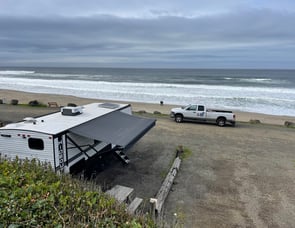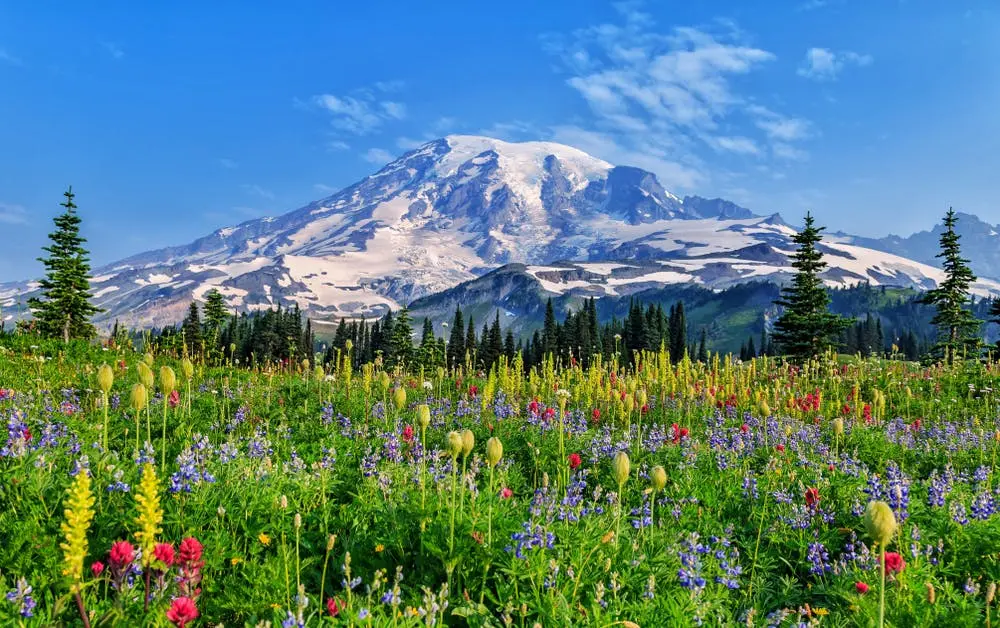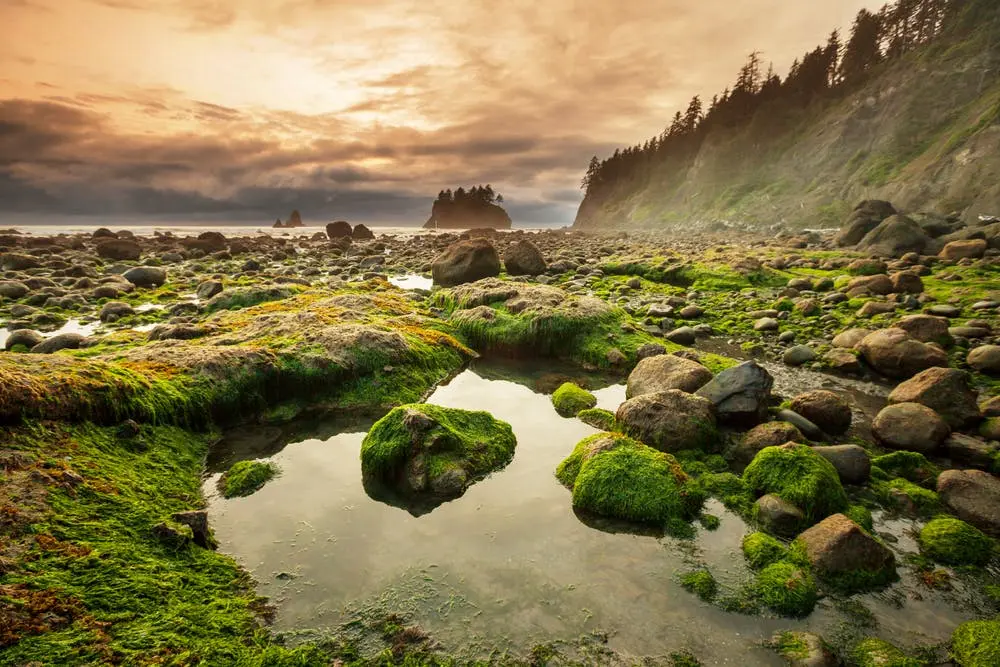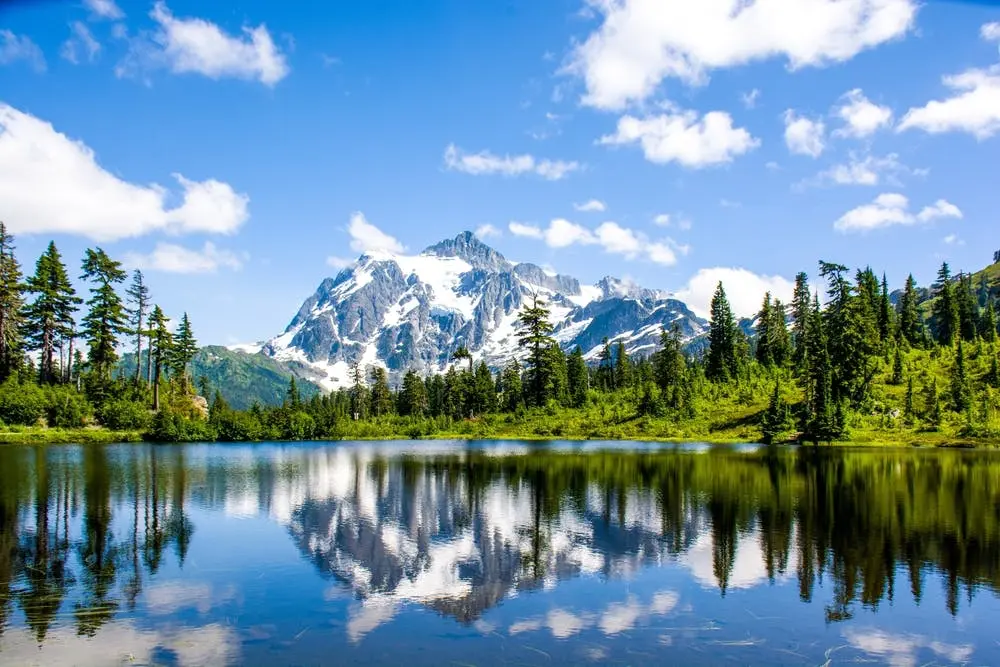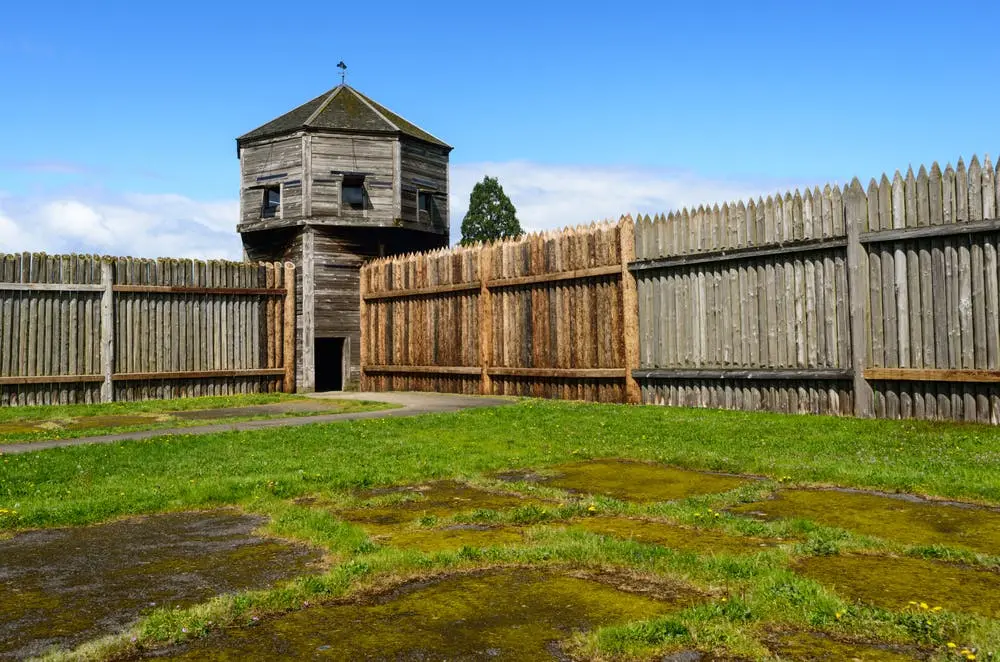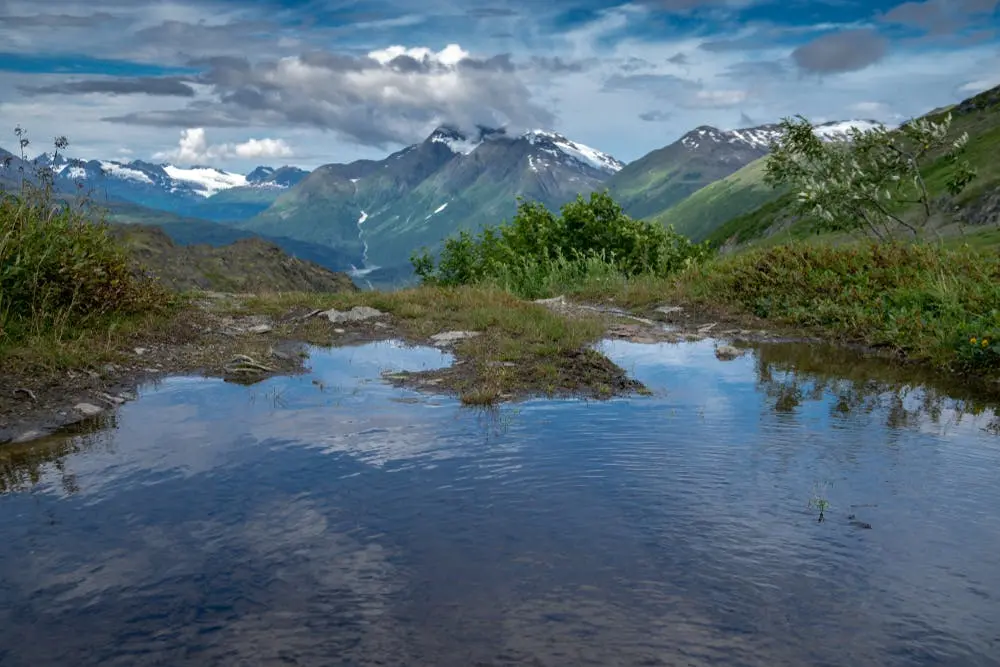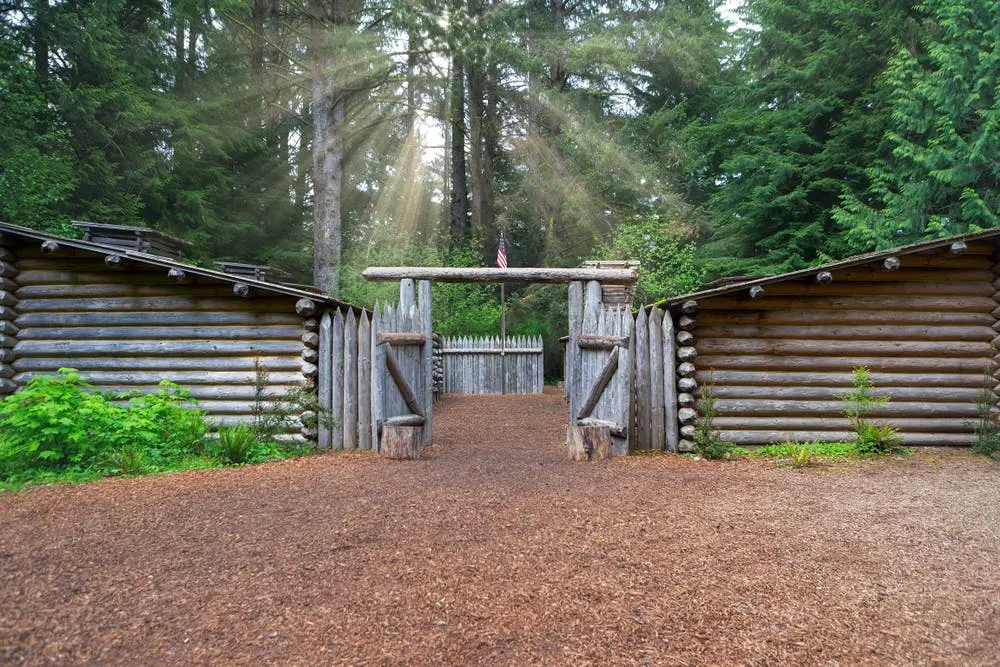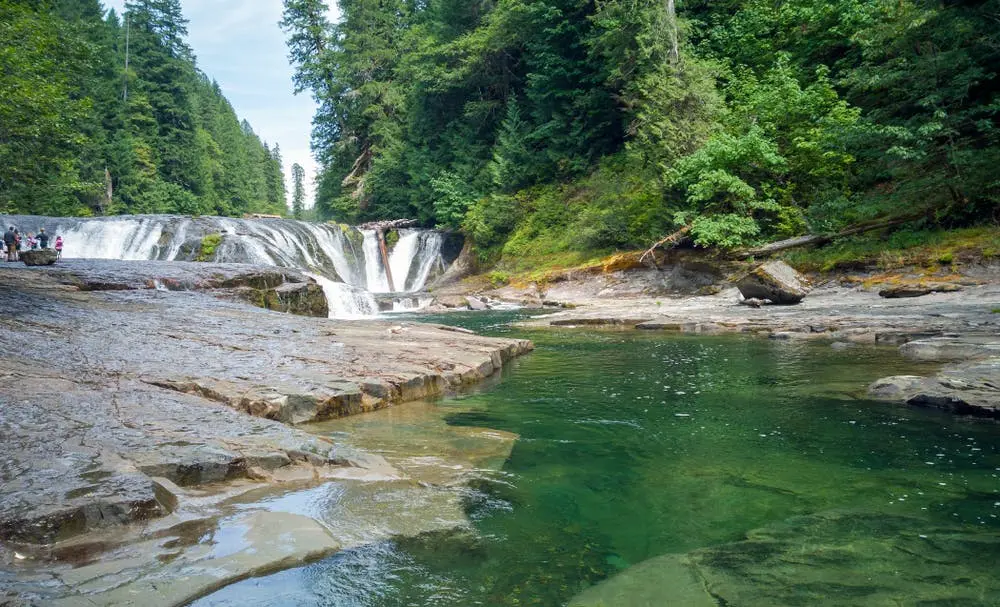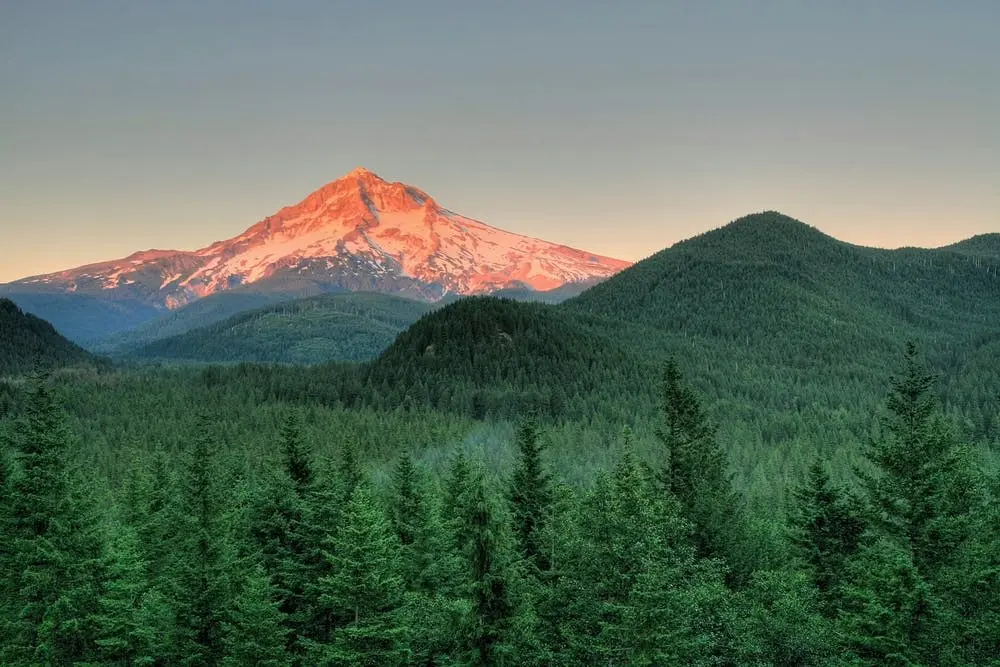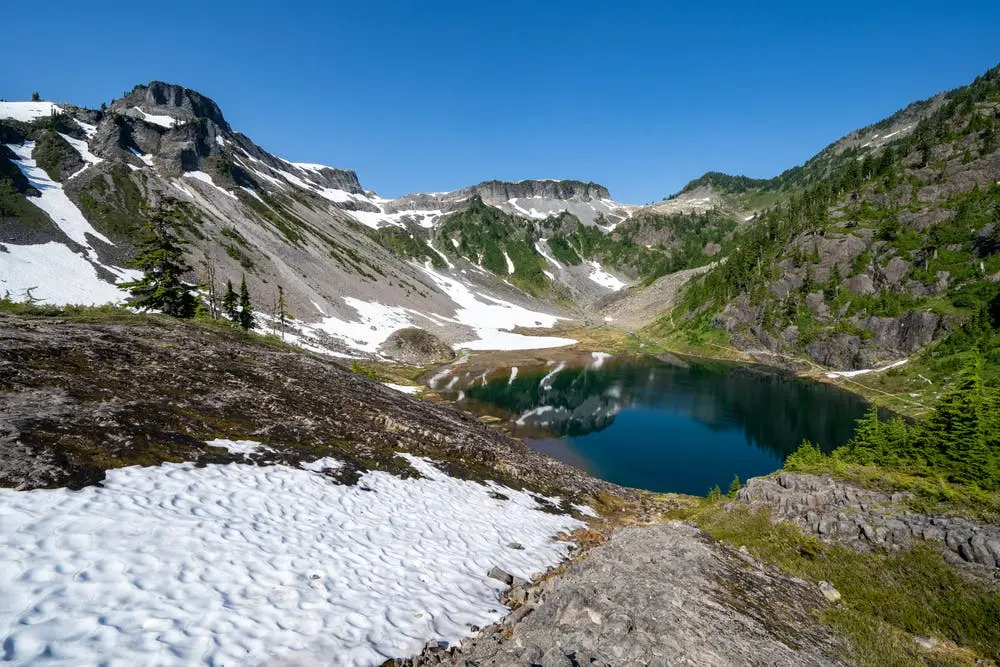Mount St. Helens National Volcanic Monument
- Home
- Attractions
- Mount St. Helens National Volcanic Monument
Mt. St. Helens erupted in May 1980 in southwestern Washington, near the Oregon border. The eruption killed dozens and altered hundreds of square miles of adjacent terrain. It caused over $1 billion in damages and deposited ash across 11 states.
The government created this 110,000-acre national monument in 1982. It continues to educate visitors and protect this historically significant site. Facilities and trails let you explore the volcano and nearby altered terrain. Today, the location gets about 750,000 visitors each year.
How to Get There
Portland, OR sits 102 miles to the south and Tacoma, WA 118 miles to the north. Portland International Airport (PDX) and Seattle-Tacoma International Airport (SEA) are the closest airports. The monument lacks public transportation, so you'll need to arrange other options to get there.
Rent an RV For Your Visit to Mount St. Helens National Volcanic Monument
Visit Mount St. Helens National Volcanic Monument
The top attraction at the monument is the 8,363-foot volcano itself. Viewpoints from the north offer the best views of the crater and its lava dome. Lahar Viewpoint on the mountain's south side is as close as you can get without climbing or hiking.
Another attraction here is Spirit Lake. It sits at the volcano base and took the full brunt of the impact in 1980. The eruption and landslide created an 850-foot wave that crashed into the hills above. Fallen trees and landslide debris filled the lake, changing its height, depth and size.
Johnston Ridge Observatory is the main facility at the monument. It provides interpretive displays, theatrical documentaries, ranger talks and guided tours.
May through September is the best time of year to visit the monument. The weather is less likely to obstruct your view during those months. Also, Mt. St. Helens isn't accessible in the winter because Spirit Lake Highway, which you must take to get there, is only open from mid-May through October.
Ticket Information
You do not have to pay to drive around the monument, however, there is an $8 fee to enter the Johnston Ridge Observatory. Tickets are available on-site.
Family-Friendly Options
The visitor center's displays and documentaries are child-friendly. It is worth noting that toddlers may find the film subject matter scary, and it may be loud for infants. Anyone over the age of five should find the visitor center and surrounding terrain engaging. Active children can enjoy hiking the less challenging trails nearby.
How to Make the Most of Your Visit
Your best experience will be following State Highway 504 east. Stop along the way at the Mt. St Helens Visitor Center near I-5, the A-frame house, the Hoffstadt Creek Bridge viewpoint and the Mount St. Helens Forest Learning Center. These stops add to your experience before entering the monument. Elk Rock Viewpoint marks the western entrance at mile marker 37. From there, you can drive to the Johnston Ridge Observatory. Any extra time should be for trail exploration and photography.
The site is a panoramic wonderland, so prepare for outdoor photography. Wide-angle lenses will best help capture the scenery. Several overlooks and views from the visitor centers offer unobstructed landscape shots.
Mount St. Helens National Volcanic Monument Accommodations
Campgrounds Nearby

Overview
Iron Creek Campground sits near the confluence of Iron Creek and the Cispus River. This large campground winds through a forest of old-growth Douglas firs, cedars and hemlock. Lush vegetation and ample space between sites offers excellent privacy.
Recreation
Iron Creek provides great fishing for cutthroat trout, whitefish and rainbow trout.
Visitors can stroll along the .3-mile Iron Creek Old Growth Trail and weave through the forest and along the Cispus River, or continue on a longer walk down the Iron Creek Campground Trail. This trail is barrier-free and designed to accommodate any age or skill level, with benches and plenty of places to stop along the way.
Facilities
Iron Creek provides great fishing for cutthroat trout, whitefish and rainbow trout.
Visitors can stroll along the .3-mile Iron Creek Old Growth Trail and weave through the forest and along the Cispus River, or continue on a longer walk down the Iron Creek Campground Trail. This trail is barrier-free and designed to accommodate any age or skill level, with benches and plenty of places to stop along the way.
Natural Features
Located in southwest Washington State, the Gifford Pinchot National Forest encompasses 1.3 million acres and includes the 110,000-acre Mount St. Helens National Volcanic Monument established by Congress in 1982.
Iron Creek is part of the Cowlitz Valley Ranger District, which is located in the northernmost portion of the Gifford Pinchot National Forest. This District is roughly located among three volcanic peaks: Mt. Rainier to the north, Mt. Adams to the east, and Mount St. Helens to the west.
Nearby Attractions
The Woods Creek Watchable Wildlife Interpretive Site is just up Forest Road 25 toward the town of Randle. Forest Road 25 is a popular scenic drive and provides excellent views of Mount St. Helens.
The Windy Ridge Viewpoint at Mount St. Helens is approximately 20 miles away.
contact_info
This location has limited staffing. Please call (360) 686-3008 for general information.
Charges & Cancellations
Cancellations
Individual Campsites: Cancellations up to 2 days before a reservation start date incur a $10.00 cancellation fee.
A visitor who cancels a reservation the day before or on the day of arrival will pay a $10.00 service fee AND forfeit the first night's use fee including tax and applicable add-on for a campsite.
Cancellations for a one-night reservation will forfeit the entire amount paid and will not be subject to an additional service fee.
No-Shows
A no-show visitor is one who does not arrive at a campground and does not cancel the reservation by check-out time on the day after the scheduled arrival date. Staff will hold a campsite until check-out time on the day following the arrival date.
No-shows are assessed $20.00 service fee and forfeit the first night's rate, taxes and applicable add-on for a campsite.
Refunds
Visitors may submit a refund request through their Recreation.gov profile within 7 days of the end date of their reservation. Refunds will not be issued after the 7 days has ended.
Refunds for debit or credit card payments will be issued as a credit to the original bank or credit card used to pay.
For check or cash purchases, Recreation.gov will mail a Treasury check for refunds of cash, check, or money order payments to the address associated with the reservation. Treasury check refunds may take up to 6-8 weeks to arrive.
In the event of an emergency closure, the Recreation.gov team or facility manager will refund all fees and will attempt to notify you using the contact information within the Recreation.gov visitor profile.


Overview
Tower Rock Campground is named for the impressive pillar that looms nearby and offers semi-private sites shaded by a mix of cedar, Douglas fir and maple.
Recreation
A privately-owned trout pond offers fishing nearby, but anglers can also cast for brook trout in the Cispus River.
The Burley Mountain trailhead is located off of Forest Road 28, about 4 miles from the Highway 23 intersection. From this trailhead, visitors can hike to multiple waterfalls, including Angel Falls.
Facilities
A privately-owned trout pond offers fishing nearby, but anglers can also cast for brook trout in the Cispus River.
The Burley Mountain trailhead is located off of Forest Road 28, about 4 miles from the Highway 23 intersection. From this trailhead, visitors can hike to multiple waterfalls, including Angel Falls.
Natural Features
Tower Rock Campground is located about a quarter mile from the south bank of the Cispus River on the east side of Mount St. Helens. The terrain is mostly meadow and mountainside, as the campground is surrounded by mountains on almost every side.
contact_info
This location has limited staffing. Please call (360) 686-3008 for general information.
Nearby Attractions
Tower Rock Campground is just east of Mount St. Helens, making it a convenient base for exploring this volcanic monument.
Layser Cave Interpretive Site, which has a short trail leading to the cave, is also nearby.
Charges & Cancellations
Cancellations
Individual Campsites: Cancellations up to 2 days before a reservation start date incur a $10.00 cancellation fee.
A visitor who cancels a reservation the day before or on the day of arrival will pay a $10.00 service fee AND forfeit the first night's use fee including tax and applicable add-on for a campsite.
Cancellations for a one-night reservation will forfeit the entire amount paid and will not be subject to an additional service fee.
No-Shows
A no-show visitor is one who does not arrive at a campground and does not cancel the reservation by check-out time on the day after the scheduled arrival date. Staff will hold a campsite until check-out time on the day following the arrival date.
No-shows are assessed $20.00 service fee and forfeit the first night's rate, taxes and applicable add-on for a campsite.
Refunds
Visitors may submit a refund request through their Recreation.gov profile within 7 days of the end date of their reservation. Refunds will not be issued after the 7 days has ended.
Refunds for debit or credit card payments will be issued as a credit to the original bank or credit card used to pay.
For check or cash purchases, Recreation.gov will mail a Treasury check for refunds of cash, check, or money order payments to the address associated with the reservation. Treasury check refunds may take up to 6-8 weeks to arrive.
In the event of an emergency closure, the Recreation.gov team or facility manager will refund all fees and will attempt to notify you using the contact information within the Recreation.gov visitor profile.
Activities Near Mount St. Helens National Volcanic Monument
Things to Do
Fishing
Nearby rivers, like the Columbia and Toutle, offer world-class salmon and steelhead fishing. Anglers can visit Horseshoe, Sacajawea and similar lakes for other species. These include bass, bluegill, crappie, trout and muskies.
Hiking
If you want to climb, the nearby Mount Adams is a highly challenging route. Or, if you are up to it, Mount Rainier's 14,411-foot peak is only a couple of hours' drive north. Moderate hikes outside Mt. St. Helens include Lower Falls Creek Trail outside Carson. It has a 5,695-foot elevation change across a 3.2-mile out-and-back route. Step up to a hard rating on High Rock Lookout Trail near Ashford. Here, you'll experience a 1,328-foot elevation change within 3.2 miles.
Fishing
Head to one of the nearby rivers such as the Toutle, Lewis or Kalama rivers to test your luck at fishing for salmon and steelhead. Some of the nearby lakes, including Silver Lake and Lake Sacajawea have crappie, trout and bass which you can catch.
National Parks
National Sites
Weather, Safety & Accessibility
Weather & Packing
Roads can be snowy and icy during the winter, but plowing keeps many open. The biggest threat to seeing the volcano is cloud cover, which can happen throughout the year. The driest and sunniest days here tend to occur between June and August.
However, you can experience various weather at the site, so pack for all occasions. Late spring and early fall snow is possible, and rain is commonplace in the Pacific Northwest. There is little on-site shade, so bring sunscreen, and apply it every two hours. Consider wearing wide-brimmed hats and sunglasses when it is sunny. Footwear with ankle support and traction is a must outside of the visitor center.
Safety & Accessibility
Mt. St. Helens is an active volcano monitored by the U.S. Forest Service and the United States Geological Survey (USGS). These governing agencies will close the monument for visitor safety should conditions warrant. They also restrict access to certain areas deemed dangerous for guests.
Johnston Ridge Observatory offers ADA parking and accessible restrooms. It also has a wheelchair ramp to the entrance. A nearby wheelchair-accessible trail allows guests to explore a mudflow-scoured canyon and waterfall. Many of the nearby trail systems are not wheelchair friendly, though.
Conclusion
Mt. St. Helens is the most recently active volcano in the Pacific Northwest. Nature's healing ability after a catastrophic volcanic eruption is on display here. You can spend anywhere from half a day to two full days exploring the monument. Johnston Ridge Observatory provides access to the blast area for everyone. It also offers an educational look at the mountain's past, including the May 1980 eruption.
FAQ
You will have several camping options nearby, including tent- and RV-friendly sites. There are several campsites along Washington Highway 504 leading into the monument area. You can also find campgrounds south of Mt. St. Helens near Swift Reservoir and Yale Lake.
You can drive your RV into the monument area using the major roadways. Spirit Lake Memorial Highway can handle motorhome traffic. Monument facilities, like the Johnston Ridge Observatory, have room to park RVs.
The monument is safe to visit, but you need to remember that it is a recently active volcano. Prepare for the site to close if officials deem it necessary for visitor safety. Note that overcast conditions common to the region can limit your view of the volcano throughout the year.
Your children will find activities within the visitor centers engaging. Active children may enjoy wandering some of the trails with their parents.
Your pet is not allowed at the Johnston Ridge Visitor Center plaza. They must be on a leash no longer than six feet and have a collar with current tags in other areas of the monument.

